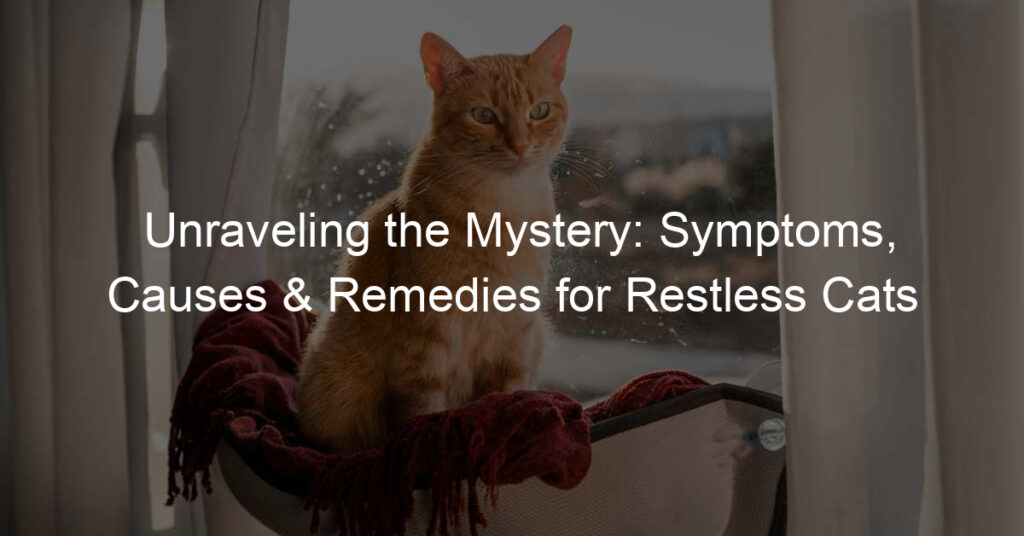
Introduction to Missing Cat Strategies
When our feline friends go missing, it can be a very distressing time. But don’t worry, there are proven strategies that can help you find your missing cat. In this section, we will explore the importance of having a strategy and give an overview of common strategies used by pet owners and experts alike.
- Understanding the importance of a strategy
- Overview of common strategies
- Immediate Search: As soon as you notice your cat is missing, start a thorough search in your home and surrounding area.
- Lost Pet Flyers: Create and distribute flyers in your neighborhood. Include a clear photo and description of your cat, along with your contact information.
- Online Alerts: Use social media and online pet recovery services to spread the word about your missing cat.
- Local Shelters and Vet Clinics: Contact local animal shelters, rescue groups, and vet clinics. Provide them with information about your cat and ask them to contact you if a cat matching your pet’s description is brought in.
Having a strategy is crucial when your cat goes missing. It helps you stay focused and organized during a stressful time. A well-planned strategy increases the chances of finding your cat quickly. It guides your actions, so you’re not just randomly searching. Instead, you’re following a plan that’s based on understanding cat behavior and using proven techniques.
There are several common strategies that people use when their cat goes missing. These include:
Remember, every cat and situation is unique. You may need to use a combination of strategies, or adjust your approach based on your cat’s personality and the specific circumstances.
Finding Lost Cats: Starting the Search
When your beloved feline friend goes missing, it can be a stressful and worrying time. However, taking immediate action can significantly increase your chances of finding your lost cat. Here are some steps you can take to start your search.
Immediate Actions
The first few hours after realizing your cat is missing are crucial. Here are some immediate actions you should take:
- Check indoor hiding spots: Cats are known for their ability to hide in the smallest and most unexpected places. Before you panic, thoroughly check all possible hiding spots in your home. This includes under beds, in closets, behind appliances, and in any small nooks or crannies.
- Search your neighborhood: Once you’ve confirmed that your cat isn’t hiding indoors, it’s time to check your immediate surroundings. Cats often don’t stray far from home. Walk around your neighborhood, calling your cat’s name and listening for any response. Remember to check under cars, in bushes, and in other potential hiding spots.
- Use your cat’s favorite treats or toys: If your cat has a favorite treat or toy, bring it with you while you search. The familiar scent or sound may attract your cat and coax them out of hiding. Shake a bag of treats, squeak a favorite toy, or even open a can of their favorite food to entice them.
These initial steps can be instrumental in finding your lost cat. Remember, it’s essential to stay calm and patient during your search. Cats can sense stress and may stay hidden if they feel threatened or scared.
Long Term Strategies
When your feline friend goes missing, it’s crucial not to lose hope. There are several long-term strategies that you can employ to increase the chances of finding your lost cat. Let’s delve into these methods.
- Creating and Distributing Flyers
- Utilizing Social Media and Online Platforms
- Enlisting the Help of Local Shelters and Vet Clinics
Flyers are a traditional yet effective method of spreading the word about your missing pet. They should include a clear, recent photo of your cat, a brief description, and your contact information. Distribute these flyers in your neighborhood, at local businesses, and community centers. According to a study by the National Council on Pet Population Study and Policy, 15% of lost pets were found due to signage or flyers.
In today’s digital age, social media platforms and online lost pet databases can be powerful tools in your search. Post about your missing cat on your personal social media accounts and local community groups. Websites like Petfinder and the Center for Lost Pets allow you to create free listings for your lost pet. As per a survey by the American Society for the Prevention of Cruelty to Animals, 15% of pet owners reported finding their lost pets through social media.
Local animal shelters and veterinary clinics are often the first places people report to when they find a lost pet. Visit these places regularly and provide them with a flyer of your missing cat. A study by the Journal of the American Veterinary Medical Association found that 49% of lost cats were found due to being spotted in the neighborhood, often reported by local shelters or clinics.
To summarize, these long-term strategies can significantly increase the chances of finding your lost cat. Remember, patience and persistence are key in this process.
| Strategy | Effectiveness |
|---|---|
| Creating and Distributing Flyers | 15% success rate |
| Utilizing Social Media and Online Platforms | 15% success rate |
| Enlisting the Help of Local Shelters and Vet Clinics | 49% success rate |
Cat Locating Techniques: Using Technology
In today’s world, technology has made it easier to locate our beloved feline friends when they go missing. Let’s explore some of these advanced cat locating techniques.
-
GPS Trackers for Cats
GPS, or Global Positioning System, is a technology that can help us find the exact location of our missing cats. These small devices are attached to the cat’s collar and send signals to your smartphone or computer. According to a recent study, GPS trackers have helped reunite thousands of lost cats with their owners. They are easy to use and provide real-time location updates, making them a valuable tool in finding lost cats.
-
Microchipping and Its Benefits
Microchipping is another effective method of locating lost cats. A microchip is a tiny device that is implanted under the cat’s skin. Each microchip has a unique number that can be read by a special scanner. If your lost cat is found and taken to a vet or animal shelter, they can scan the microchip to get your contact information. Microchipping has been proven to increase the chances of a lost cat being returned home by up to 20 times.
-
Apps and Websites for Finding Lost Pets
There are also numerous apps and websites dedicated to helping find lost pets. These platforms allow you to post information about your missing cat and alert a community of pet lovers who can help in the search. Some popular apps include Petfinder and PawBoost. These platforms have helped reunite countless lost pets with their owners, demonstrating the power of technology in locating lost cats.
With these technological advancements, finding a lost cat has become less daunting. By using GPS trackers, microchipping, and pet-finding apps and websites, you can increase your chances of reuniting with your missing feline friend.
Lost Pet Solutions: Community Involvement
When a beloved pet goes missing, it can be a distressing time for the whole family. But you’re not alone. Your local community can be an invaluable resource in helping you find your lost pet. In this section, we will explore how to organize a search party and effectively involve your community in the search process.
Organizing a Search Party
Organizing a search party is one of the most effective ways to cover a large area in a short amount of time. Here are some key steps to consider:
- Recruiting Volunteers
- Coordinating the Search
Start by reaching out to your neighbors, friends, and family members. Most people understand the distress of losing a pet and will be more than willing to help. You can also use social media platforms to recruit volunteers. Remember, the more people you have searching, the higher your chances of finding your lost pet.
Once you have your volunteers, it’s important to coordinate the search effectively. Assign different areas to different people to ensure every possible location is covered. Make sure everyone has a clear picture of your pet and your contact information. It can also be helpful to have a central meeting point where everyone can report back with any sightings or information.
Organizing a search party may seem daunting, but remember, the goal is to bring your pet home safely. Your community can provide the support and manpower needed to make this happen. So, don’t hesitate to reach out and ask for help.
Working with Local Businesses
When your beloved cat goes missing, it’s important to involve your local community in the search. Local businesses can play a crucial role in helping you find your lost pet. Here are two effective strategies you can use:
- Posting Flyers in Local Businesses
Creating and distributing flyers is a traditional yet effective method of spreading the word about your missing cat. Local businesses often have bulletin boards or windows where they allow community members to post notices.
When designing your flyer, remember to include a clear photo of your cat, a brief description, and your contact information. It’s also helpful to mention any unique characteristics that could help someone identify your cat.
Don’t forget to ask for permission before posting your flyer. Most business owners will be more than willing to help, especially when they understand the situation.
- Asking for Surveillance Video
Many businesses have surveillance cameras for security purposes. These cameras might have captured footage of your cat. Politely ask the business owners if they could check their video footage for any sign of your missing pet.
Remember to provide them with specific details, like the time you think your cat went missing and its distinctive features. This can make it easier for them to spot your cat in the footage.
Working with local businesses is a powerful way to leverage your community’s resources in your search for your missing cat. By posting flyers and asking for surveillance video, you can significantly increase your chances of finding your lost pet.
Remember, the key to success is communication. Always approach business owners respectfully and express your gratitude for their help. Together, you can bring your furry friend home safely.
Tips for Finding Missing Cats: Behavior and Patterns
When your cat goes missing, it can be a stressful and worrying time. However, understanding your cat’s behavior and patterns can greatly increase your chances of finding them. Here are some tips to guide your search.
- Understanding Cat Behavior
Cats are known for their curious and independent nature. They are territorial creatures and often have a specific area or ‘territory’ that they frequent. Understanding this behavior can help you predict where your cat might go if they wander off. For instance, if your cat loves to climb trees, start your search in areas with lots of trees.
- Recognizing Your Cat’s Patterns and Habits
Every cat has its unique habits and patterns. Some cats might prefer to stay indoors, while others might love to explore the outdoors. Pay attention to your cat’s favorite spots, their feeding times, and their sleeping patterns. If your cat tends to sleep in the afternoon, they might not wander far from home during this time. Knowing these patterns can help you determine the best times and places to search for your missing cat.
- Using Your Cat’s Behavior to Guide Your Search
Once you understand your cat’s behavior and patterns, you can use this knowledge to guide your search. Start by searching their favorite spots and expand your search from there. Remember, cats are creatures of habit. They are likely to stick to their usual routes and hideouts. Therefore, don’t forget to check these places first.
Additionally, consider the time of day. Cats are most active during dawn and dusk, so these might be the best times to search. Also, remember that cats are excellent at hiding and can squeeze into small spaces. Therefore, don’t overlook places like under cars, in bushes, or in small crevices.
In conclusion, understanding your cat’s behavior and patterns is crucial when they go missing. By using this knowledge, you can increase your chances of finding your beloved pet.
| Key Points |
|---|
| Understand your cat’s behavior and territory |
| Recognize your cat’s patterns and habits |
| Use this knowledge to guide your search |
Strategies for Lost Cats: Prevention and Preparation
Before we dive into the heart-wrenching experience of losing a cat, let’s talk about some strategies that can prevent this from happening in the first place. These prevention strategies are simple, yet effective ways to ensure your feline friend stays safe and secure.
Prevention Strategies
Here are three key prevention strategies that every cat owner should consider:
- Proper identification for your cat
- Keeping your cat indoors
- Training your cat to come when called
One of the first steps in preventing your cat from getting lost is to ensure they have proper identification. This can be in the form of a collar with an ID tag or a microchip. According to the American Veterinary Medical Association, microchipped cats are 20 times more likely to be returned to their owners. This tiny device, implanted under your cat’s skin, contains a unique number that can be scanned by a vet or animal shelter.
Keeping your cat indoors is another effective prevention strategy. Indoor cats are less likely to get lost or injured. The Humane Society of the United States states that indoor cats live longer, healthier lives than outdoor cats. If your cat enjoys the outdoors, consider creating a safe, enclosed outdoor space or training them to walk on a leash.
Training your cat to respond to their name or a specific sound can be a lifesaver. This can be done using positive reinforcement techniques, like treats or praise. A study published in the Journal of Veterinary Behavior found that cats can recognize their owner’s voice and respond to it. So, if your cat ever wanders off, they’ll be more likely to come back when called.
Remember, prevention is always better than cure. By following these strategies, you can significantly reduce the risk of your cat getting lost. Stay tuned for our next section where we will discuss preparation strategies in case your cat goes missing.
Preparation Strategies
Preparation is key when it comes to dealing with a missing cat situation. Here are some strategies you can employ to ensure you’re ready in case your feline friend goes missing:
- Having a plan in case your cat goes missing
- Keeping recent photos of your cat
- Knowing who to contact if your cat is missing
Just like you’d have a plan for a fire or earthquake, it’s important to have a plan in case your cat goes missing. This could include a list of places your cat likes to hide, a list of neighbors to contact, and a plan for creating and distributing flyers. Remember, the faster you act, the higher the chances of finding your missing cat.
It’s crucial to have recent photos of your cat. These photos should be clear and show your cat from different angles. If your cat has any unique markings, make sure you have photos of those too. These photos can be used on flyers, social media posts, and can be given to animal shelters to help identify your cat.
Knowing who to contact when your cat goes missing can save precious time. This list should include your local animal shelters, animal control, and nearby veterinary clinics. You can also consider reaching out to local pet rescue organizations. It’s a good idea to keep this list somewhere easily accessible, like on your fridge or saved in your phone.
Remember, preparation is the key to a quick and successful recovery of your missing cat. By having a plan, keeping recent photos, and knowing who to contact, you’ll be well equipped to handle this stressful situation.
Missing Cat Recovery: Success Stories
It’s always heartwarming to hear about lost cats finding their way back home. Here are three success stories that highlight different strategies used in missing cat recovery.
-
Case Study 1: A Cat Found After Two Months
Meet Whiskers, a curious tabby who went missing for two whole months. Whiskers’ family searched high and low, put up posters, and asked their neighbors to keep an eye out. Their persistence paid off when a neighbor spotted Whiskers hiding in their garden shed. This story shows the importance of not giving up, even when the odds seem against you.
-
Case Study 2: A Cat Located Using Social Media
Next, we have the story of Bella, a shy Siamese who was found thanks to the power of social media. Bella’s family posted her picture on local lost and found pet groups on Facebook. A week later, a kind stranger recognized Bella from the posts and contacted her family. This success story highlights how useful social media can be in locating a lost pet.
-
Case Study 3: A Cat Returned Home Due to Microchipping
Finally, we have the story of Max, a mischievous Maine Coon who was returned home because of his microchip. Max was found by a local animal shelter, and because he was microchipped, they were able to contact his family immediately. This case study underscores the importance of microchipping your pets for their safety.
These success stories serve as a reminder that there are various strategies to find a missing cat. Whether it’s through traditional methods, the use of technology, or community involvement, the key is to stay hopeful and persistent in your search.
Lost Cat Search Strategies: Expert Advice
When it comes to finding a lost cat, expert advice can be invaluable. We’ve gathered insights from professionals in the field to help guide your search. Here are some key strategies from a pet detective, a vet, and a cat behaviorist.
-
Interview with a Pet Detective
Jim, a seasoned pet detective, has been helping families reunite with their lost pets for over a decade. He emphasizes the importance of acting quickly. “The first 24 hours are crucial,” he says. “Start by thoroughly searching your home. Cats are known for their ability to hide in the smallest and most unlikely places.”
Jim also recommends using your cat’s favorite food to lure them back home. “Place the food outside your home and check it regularly. If your cat is nearby, the familiar scent may draw them back.”
-
Advice from a Vet on Lost Cat Behavior
Dr. Smith, a veteran veterinarian, provides insights into lost cat behavior. “Cats are territorial creatures,” she explains. “When they’re lost, they’re likely to stay close to home. Look in nearby trees, under decks, and in other hiding spots.”
She also advises against chasing a scared cat. “If you spot your cat, approach slowly and calmly. Sudden movements can scare them off.”
-
Tips from a Cat Behaviorist on Attracting a Lost Cat
Cat behaviorist, Lisa, shares her tips for attracting a lost cat. “Cats have a strong sense of smell,” she says. “Try placing items with your scent, like a worn t-shirt, outside. This can help your cat find their way back home.”
Lisa also suggests using a humane cat trap. “These traps can be baited with food and provide a safe way to catch a scared or wary cat.”
Remember, every cat is unique and what works for one might not work for another. It’s important to stay patient and persistent in your search. With the right strategies and expert advice, you’ll have the best chance of finding your lost cat.
Techniques for Locating Lost Cats: Final Thoughts
As we come to the end of our comprehensive guide on finding lost cats, it’s important to reflect on the key takeaways. Our feline friends are experts at hiding and can sometimes wander off, causing distress to their owners. However, with the right strategies and a bit of patience, you can increase the chances of a happy reunion.
- Recap of the most effective strategies: We’ve discussed various techniques, from starting the search immediately to leveraging technology and involving the community. Understanding your cat’s behavior and patterns can also provide crucial clues. It’s essential to be prepared and take preventive measures, like microchipping your cat and keeping an updated photo. Remember, every cat and situation is unique, so you may need to use a combination of these strategies.
- Importance of not losing hope: Finding a lost cat can be a challenging and emotional journey. It’s easy to feel disheartened, especially when days turn into weeks. However, there are countless success stories of cats returning home after being missing for a long time. Keep your spirits high, and remember that your persistence can make all the difference.
- Resources for further reading: To deepen your understanding of cat behavior and effective search techniques, consider reading books like “Lost Cat: A True Story of Love, Desperation, and GPS Technology” by Caroline Paul or “The Secret Life of Cats: Everything Your Cat Would Want You to Know” by Claire Bessant. These resources can provide valuable insights and practical tips to help you in your search.
In conclusion, while losing a cat can be a distressing experience, remember that there are effective strategies you can use and resources available to help. Stay hopeful, stay persistent, and never give up on your feline friend.








